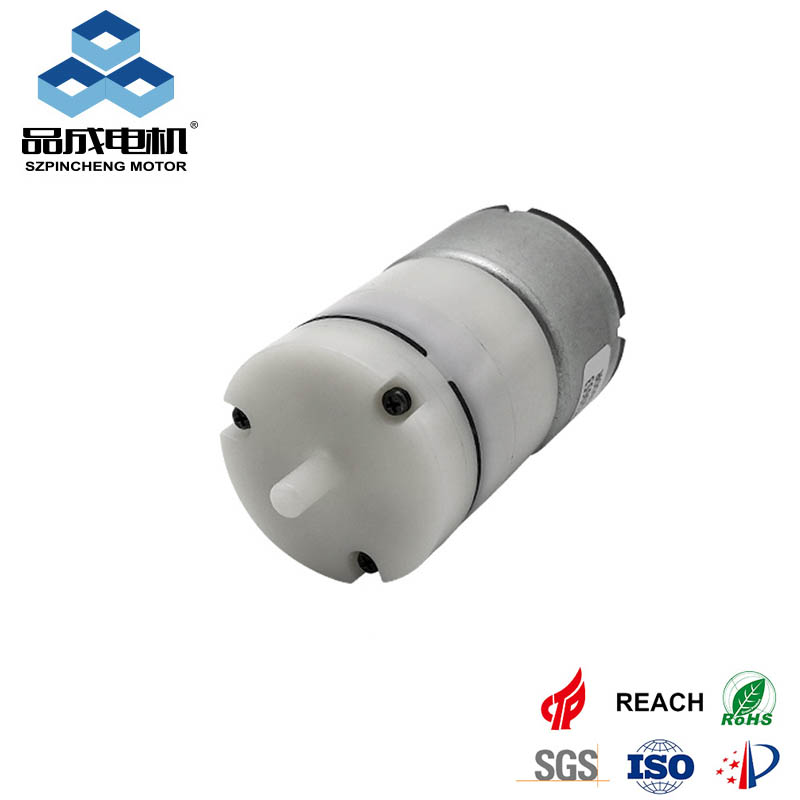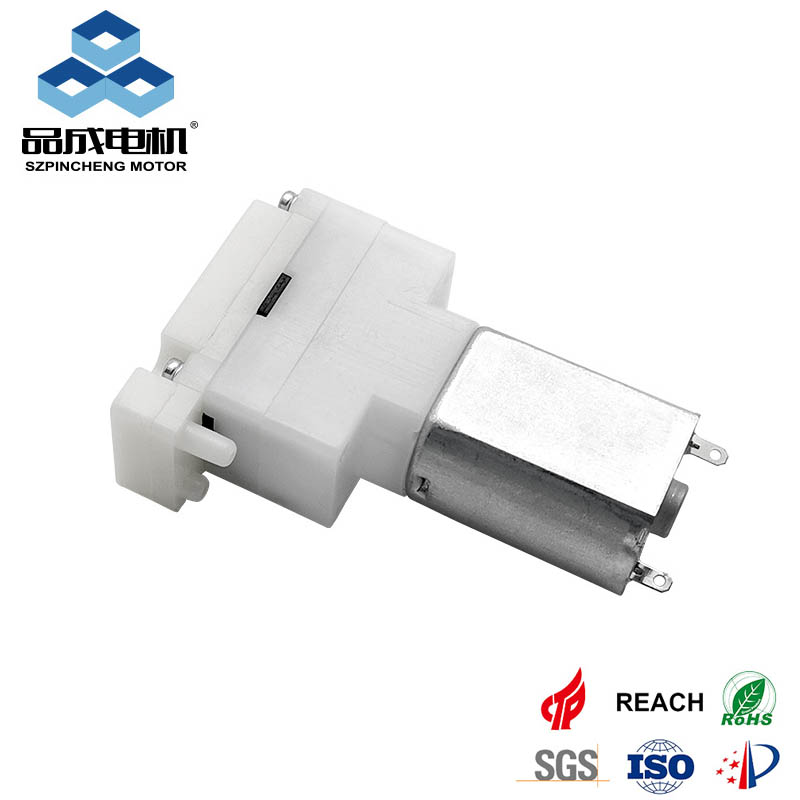The promise of miniaturization is quiet, unobtrusive technology. Yet, for many users, the experience of a micro air pump is often marred by an unexpected and irritating noise. The question, Why micro air pump so loud? is a common one, especially in applications like medical devices, aromatherapy diffusers, or portable electronics where silence is golden. This article delves into the fundamental sources of noise in these compact devices, from the micro air pump 6v to the mini air vacuum pump, and explains how manufacturers like Pincheng Motor engineer solutions to deliver a truly small quiet air pump.
The Three Primary Sources of Air Pump Noise
Noise in a micro air pump is not a single phenomenon but a combination of three distinct acoustic sources: mechanical, pneumatic, and electrical.
1. Mechanical Noise: The Motor and Moving Parts
The core of any micro pump is a DC motor, and its operation generates noise through vibration.
• Motor Vibration: Imbalance in the motor's rotor or worn bearings can cause the entire pump housing to vibrate, acting like a small speaker. This is often the source of a low-frequency hum or rattle.
• Component Friction: In diaphragm pumps, the rapid movement of the connecting rod and the flexing of the diaphragm itself can create clicking or slapping sounds.
• Mounting: If the micro air pump 6v is rigidly mounted to a hard surface, the noise is amplified and transmitted throughout the device's casing.
2. Pneumatic Noise: The Air Itself
This is the sound generated by the movement of air through the pump and the system.
• Inlet/Outlet Pulsation: Air is drawn in and expelled in discrete pulses, creating a rapid "puffing" sound. This pulsation is particularly noticeable in a mini air vacuum pump where the air is being rapidly compressed or evacuated.
• Turbulence: Air rushing through small, sharp-angled ports and tubing creates high-frequency whistling or hissing sounds.
3. Electrical Noise: The Motor Commutation
In brushed DC motors, the commutation process (where brushes switch current to the motor windings) can generate high-frequency electrical noise that is sometimes audible or can interfere with sensitive electronics.
Troubleshooting: Making Your Micro Pump Quieter
Before replacing a noisy pump, a few simple steps can often significantly reduce the acoustic output.
• Check the Mounting: Is the pump rigidly mounted? Using soft, rubber grommets or specialized acoustic dampening foam between the micro air pump 6v and the device casing can absorb mechanical vibration, turning a loud rattle into a whisper.
• Inspect the Tubing: Ensure the tubing is not kinked or rubbing against the device walls. Kinks increase back pressure, forcing the pump to work harder and louder.
• Filter the Air: A clogged inlet filter can starve the pump of air, causing it to strain and generate excessive noise. Regularly cleaning or replacing the filter is a simple maintenance step.
Pincheng Motor: Engineering the Small Quiet Air Pump
At Pincheng Motor, we recognize that noise is a critical factor in product quality. Our design philosophy is centered on acoustic excellence, ensuring that our pumps are not just functional, but virtually silent. We don't just build a mini air vacuum pump; we build a quiet solution.
• Acoustic Dampening Materials: We utilize specialized, high-density, low-rebound materials in our pump housings and mounting feet to absorb and isolate mechanical vibrations, making our products inherently a small quiet air pump.
• Precision Motor Balancing: Our motors undergo a rigorous balancing process to eliminate rotor imbalance, which is the primary source of low-frequency hum.
• Optimized Airflow Dynamics: We use advanced computational fluid dynamics (CFD) to design smooth, optimized air channels and ports, minimizing turbulence and the resulting pneumatic noise.
• Customized Solutions: For highly sensitive applications, we offer customized acoustic enclosures and tailored flow curves, ensuring the pump operates at its most efficient and quietest point for your specific micro air pump 6v application.
Conclusion
The answer to Why micro air pump so loud? lies in the complex interplay of mechanical and pneumatic forces within a tiny package. While noise is an inherent part of any moving system, it is not an unavoidable flaw. By understanding the sources of noise and applying advanced engineering principles, manufacturers can deliver a truly small quiet air pump. When selecting your next component, choose a partner like Pincheng Motor, where acoustic excellence is a standard feature, ensuring your product delivers performance without the unwanted noise.
you like also all
Read More News
Post time: Nov-24-2025




